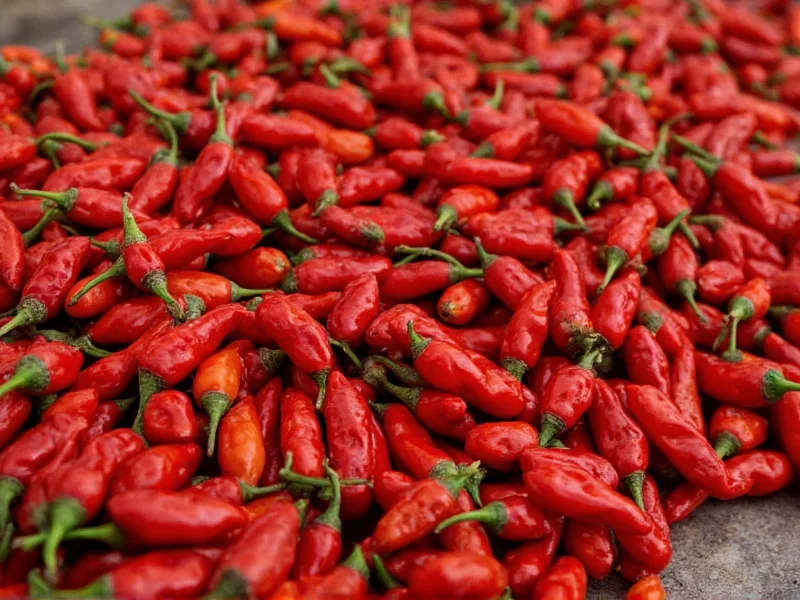Understanding chipotle pepper heat requires examining both their scientific measurement and practical culinary impact. These dried, smoked jalapeños deliver a complex flavor profile where the smokiness can sometimes mask the actual heat level, making them seem less intense than their Scoville rating might suggest.
What Exactly Are Chipotle Peppers?
Chipotle peppers are ripe jalapeños that have been smoke-dried, transforming their flavor and texture. The name comes from the Náhuatl word “chilpoctli,” meaning “smoked chili.” This smoking process creates their distinctive deep brown color and wrinkled appearance. You'll commonly find them in two forms: dried whole chipotles or canned in adobo sauce (a tangy tomato-based sauce with spices).
Decoding the Chipotle Pepper Heat Level
The Scoville scale measures chili pepper heat by determining capsaicin concentration. Chipotles inherit their heat from jalapeños but develop subtle variations through the smoking process:
| Pepper Type | Scoville Heat Units | Heat Comparison |
|---|---|---|
| Chipotle Pepper | 2,500-8,000 SHU | Medium heat |
| Jalapeño (fresh) | 2,500-8,000 SHU | Same base heat |
| Serrano | 10,000-23,000 SHU | 2-3x hotter |
| Habanero | 100,000-350,000 SHU | 15-40x hotter |
| Poblano | 1,000-2,000 SHU | Milder |
Interestingly, chipotle peppers and fresh jalapeños share the same Scoville range because they're the same pepper variety. However, the drying process concentrates flavors, which can make chipotles seem more intense despite identical capsaicin levels. The smoking process also adds complexity that affects how we perceive the heat.
Factors That Influence Chipotle Pepper Heat
Several variables affect how spicy your chipotle peppers will be:
- Growing conditions: Soil quality, climate, and water stress impact capsaicin production
- Ripeness at harvest: Fully red jalapeños (used for chipotles) tend to be hotter than green ones
- Smoking duration: Longer smoking can slightly reduce perceived heat through flavor complexity
- Preparation method: Canned chipotles in adobo often seem milder due to the sauce's balancing effect
- Individual tolerance: Your personal heat sensitivity significantly affects perception
Chipotle in Adobo vs. Dried Chipotle Heat Comparison
Many home cooks wonder how spicy are chipotle peppers in adobo compared to dried versions. While the actual capsaicin content remains similar, the experience differs:
- Dried chipotles: Deliver more concentrated heat with earthy, smoky notes. Rehydrating them releases capsaicin gradually.
- Chipotles in adobo: The vinegar and tomato in adobo sauce temper the immediate heat, creating a more balanced flavor profile. The sauce also distributes heat more evenly in recipes.
When substituting between forms, use one dried chipotle pepper for every 1-2 peppers in adobo, adjusting based on your heat preference. Remember that are chipotle peppers hotter than regular jalapeños isn't a simple yes/no question—they're the same pepper, but preparation affects heat perception.
Practical Tips for Managing Chipotle Heat in Cooking
Understanding how to use chipotle peppers without too much heat transforms your cooking experience:
- Start small: Begin with half a chipotle pepper and taste before adding more
- Remove seeds and membranes: These contain most capsaicin—scrape them out for milder flavor
- Balance with dairy: Yogurt, sour cream, or cheese counteracts capsaicin effectively
- Use acid to your advantage: Lime juice or vinegar can help balance intense heat
- Consider cooking time: Longer cooking distributes heat more evenly but doesn't reduce overall spiciness
For those sensitive to heat, chipotle pepper substitutes for mild recipes include smoked paprika (for flavor without heat) or ancho peppers (for mild smokiness). Remember that chipotle's value lies in its complex flavor, not just heat—you can often reduce the quantity while maintaining delicious results.
Common Questions About Chipotle Pepper Heat
Are chipotle peppers hotter than regular jalapeños?
Chipotle peppers and fresh jalapeños have identical Scoville ratings (2,500-8,000 SHU) since chipotles are simply smoke-dried jalapeños. However, the drying process concentrates flavors, which can make chipotles seem more intense, while the smoking adds complexity that may balance the heat perception.
How does chipotle heat compare to other common peppers?
Chipotles (2,500-8,000 SHU) are milder than serranos (10,000-23,000 SHU) and habaneros (100,000-350,000 SHU) but hotter than poblanos (1,000-2,000 SHU). They share the same heat range as fresh jalapeños but deliver it with a distinctive smoky flavor that affects heat perception.
Why do chipotles in adobo seem less spicy than dried chipotles?
The adobo sauce's vinegar, tomatoes, and spices balance and distribute the heat more evenly. While the actual capsaicin content remains similar, the sauce creates a more rounded flavor profile that makes the heat feel less intense and immediate compared to dried chipotles, which deliver more concentrated heat when rehydrated.
Can I reduce chipotle pepper heat in my recipe after it's too spicy?
Yes, several methods can help: add dairy products like yogurt or sour cream, incorporate acid like lime juice, increase non-spicy ingredients to dilute the heat, or add sweetness with honey or sugar. Remember that cooling methods work best when added before serving, as capsaicin doesn't dissipate with continued cooking.











 浙公网安备
33010002000092号
浙公网安备
33010002000092号 浙B2-20120091-4
浙B2-20120091-4